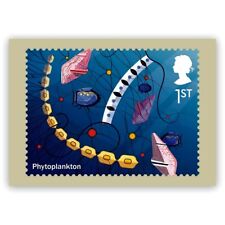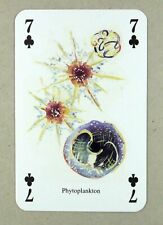
The idea of fertilizing the ocean with iron to remove carbon dioxide from the atmosphere gained momentum in the 1980s. Ocean scientists saw potential for a low-cost method for reducing greenhouse gases and possibly enhancing fisheries. Plankton take-up carbon in surface waters during photosynthesis, creating a bloom that other animals feed upon. Carbon from the plankton is integrated into the waste products from these animals and other particles, and settles to the seafloor as “marine snow” in a process called the “biological pump.” Iron added to the ocean surface increases the plankton production, so in theory fertilizing the ocean with iron would mean more carbon would be removed from surface waters to the deep ocean. Once in the deep ocean, the carbon would be isolated in deep waters for centuries. The oceans already remove about one third of the carbon dioxide released each year due to human activities, so enhancing this ocean sink could in theory help control atmospheric carbon dioxide levels and thus regulate climate. But a new study indicates that iron fertilization may not be the quick fix to climate problems that some had hoped.
New data, reported in the journal Science, suggest that there is a direct link between iron fertilization and enhanced carbon flux and hence atmospheric carbon dioxide levels, but that the quantities that can be removed are no greater than natural plankton blooms and are not large enough to serve as a quick fix to our climate problems.
Results from the largest ocean fertilization experiment to date, the Southern Ocean Iron Experiment (SOFeX), are reported in three related articles in Science. Ken Buesseler and coauthors John Andrews, Steven Pike and Matthew Charette of the Woods Hole Oceanographic Institute reported their findings on ocean carbon fluxes in one of the articles, and Buesseler is a coauthor on a second article.
SOFeX was conducted using three ships in January and February 2002 at two sites in the Southern Ocean, surrounding Antarctica.
The 2002 study focused on two areas of 15 square kilometers in the Southern Ocean between Antarctica and New Zealand. The sites were chosen to represent contrasting ecological and chemical conditions in the Southern Ocean. Just over one metric ton of iron was added to surface waters to stimulate biological growth at the southern site that Buesseler studied. Scientists aboard the three ships observed the biological patch for 28 days and measured the amount of carbon being transported deeper into the ocean in the form of sinking particulate organic carbon.
Buesseler and colleagues quantified for the first time how much carbon was being removed in response to iron from surface waters to depths of 100 meters, which they estimated at 1,800 tons for an area of 400 square miles. They were surprised to find that particles were being carried to the deep sea more efficiently in response to the addition of iron, but noted that this carbon flux is still quite low compared to natural variations at these latitudes.
Buesseler and his colleagues say that simply adding iron to the ocean may not result in enhanced removal of carbon dioxide from surface waters to the deep ocean. “You would have to keep doing it over, and if you wanted to have a big impact the size of the area required is bigger than the Southern Ocean. And even if you could do it, what effect might it have on other aspects of ocean ecology? This remains an unknown.”













Comments are closed.